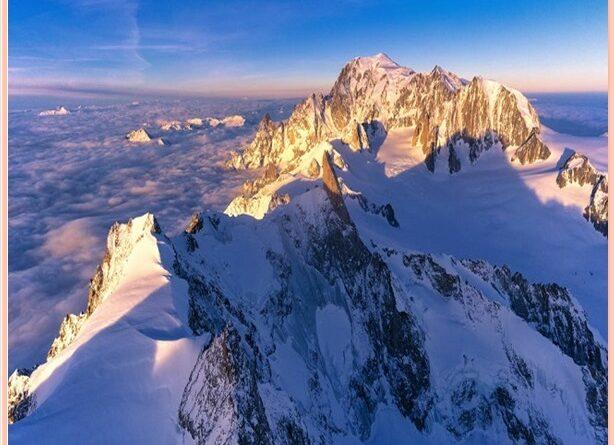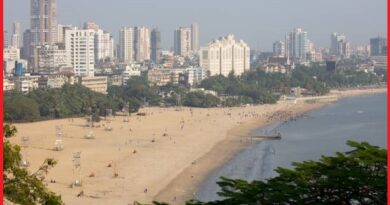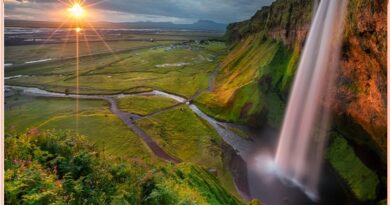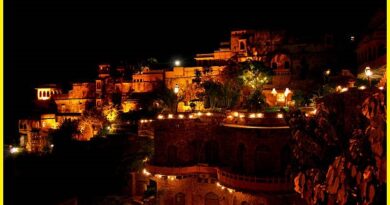The Deadliest-Mont Blanc Mountain range and its Geology
Mont Blanc Mountain
Mont Blanc mountain is one of the highest mountains in Europe, located in the French Alps. It’s also known as Le Mont Blanc and has an elevation of 4,807.81 m above sea level. The mountain can be seen in many parts of France and Switzerland. There are different ways to experience Mount Blanc, depending on your interests and abilities. For example, you can hike to the summit or take a cable car up to the top. Mont Blanc is the highest mountain in the Alps and Western Europe. It is the second-most prominent mountain in Europe, after Mount Elbrus. The mountain stands between the regions of Aosta Valley, Italy, and Savoie and Haute-Savoie, France. It gives its name to the Mont Blanc massif, bordering Switzerland and forming part of a larger range, the Graian Alps.
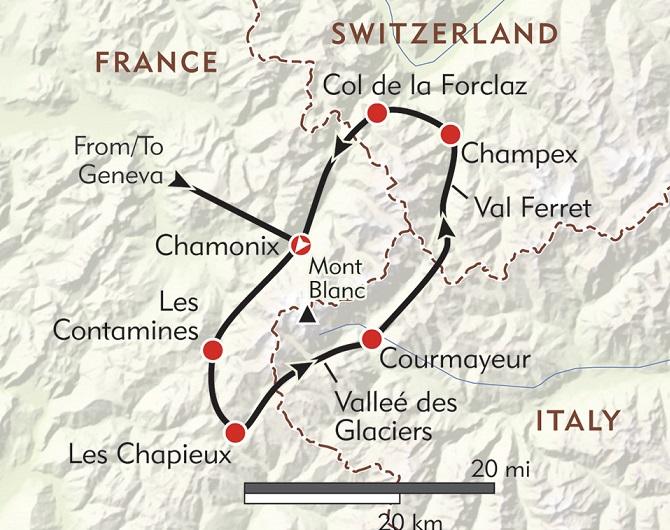
Geology of the Mont Blanc
The Mont Blanc mountain is part of the Alps mountain range and a product of the complex geology of the Alps. The Alps originated 770 million years ago after the collision of the African and European tectonic plates and the upheaval of the earth’s crust lifted up schist, gneiss, and limestone rocks. The Mont Blanc and the Aiguilles Rouges are predominantly made of granite intrusions and metamorphic rocks. These are responsible for the formation of the base of the mountains and have pushed through the older rocks around 300 million years ago. Once again, the collision of continental plates caused the uplift of the earth’s crust and the formation of the Alps’ great mountain range about 15 million years ago. This orogeny was followed by ice ages that caused the glaciers to advance, retreat and advance again. This movement across the landscape shaped the mountains and valleys, that we have seen today.
The Mont Blanc massif is 46 kilometers long ridge across the borders of France, Italy, and Switzerland. At its widest point, the massif is 20 km. The northwestern side of the massif lies mostly within France and is bounded by the valley of the Arve, containing the towns of Argentière, Chamonix, and Les Houches.
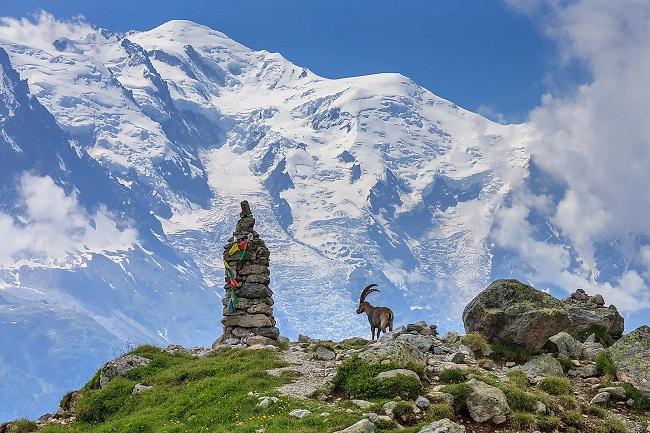
The Mont Blanc mountain is popular for outdoor activities like mountaineering, trail running, and winter sports like skiing, and snowboarding, hiking, climbing either along its mountain trails or glaciers. A climb to the summit requires excellent physical fitness, to help you endure the 10-12 hours of effort required at these high altitudes, as well as a professional mountain guide. The most popular climbing route to the summit of Mont Blanc is the Goûter Route, which typically takes two days to climb. The three towns and their communes that surround Mont Blanc are Courmayeur in Aosta Valley, Italy; and Saint-Gervais-Les-Bains and Chamonix in Haute-Savoie, France. A cable car ascends and crosses the mountain range from Courmayeur to Chamonix, through the Col du Géant.
Views from the Mont Blanc summit
From the summit, the view stretches to four mountains range: The Jura, the Vosges, the Black Forest (Germany), and the Massif Central. However, it is not always possible to distinguish these mountains, due to pollution emanating from the plains and the absence of wind. Mont-Blanc can be viewed from several places in eastern France. From the Ballon d’Alsace in the Vosges to Dijon, Lyon, Grenoble, and Geneva, Switzerland
What to see around Mont-Blanc
The Mont-Blanc massif is a tourist hotspot with many sites to explore. some important ones here-
The town of Chamonix
The town of Chamonix lies at the foot of Mont-Blanc. It offers a wide range of outdoor activities from mountaineering, hiking, and climbing to skiing and snowboarding. The Mont Massif massif is home to nearly 25 animal species including chamois, ibex, marmots, and alpine chough, and 45 plant species in the area.
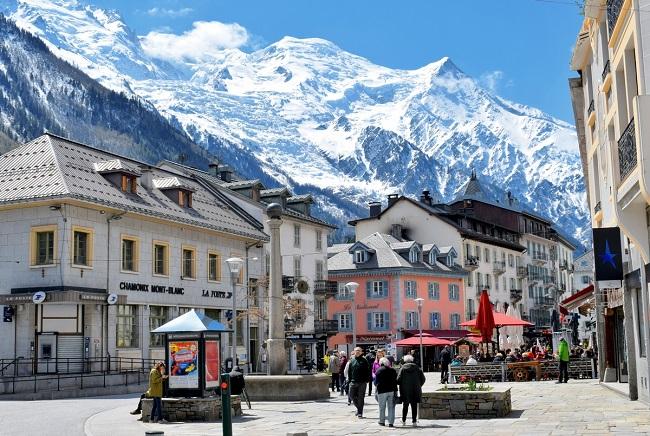
The Mont-Blanc Tunnel
Linking Chamonix, France to Courmayeur, Italy, the Mont-Blanc tunnel is one of France’s longest tunnels (11.6 km).
The villages of Cordon and Combloux
The villages of Cordon and Combloux are Situated between Sallanches and Megève and have spectacular views of the Mont-Blanc massif. The village is famous for scenic11111 churches’ onion-shaped spires. And also for the well-maintained chalets that make Cordon and Combloux spectacular site sites in the region.
The Tour du Mont-Blanc trail
The 170 km Tour du Mont-Blanc trail is a walking trail that circles the Mont Blanc massif through Chamonix (France), Martigny (Switzerland), and Courmayeur (Italy). It usually takes 8-10 days to cover the entire distance of this massif. The route passes through seven valleys around Mont Blanc-
- The Chamonix (or Arve) valley, the Montjoie, and Vallée des Glaciers, in France,
Val Veni and Val Ferret in Italy.
Swiss Val Ferret, and either the Arpette or Trient valley in Switzerland.
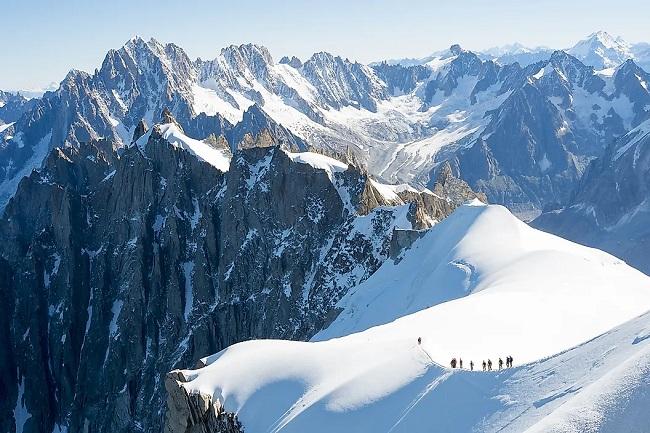
Mont Blanc tour By helicopter
If you’re interested in experiencing Mount Blanc from a different perspective, consider taking a helicopter ride to the summit. You can book your flight online or at one of the many heliports located near the mountain massif. There are several companies that offer these flights, including Helitours and Air France.
Also read- Rock Island And Palau: The Most Unique And Serene Destination
By foot
If you’re interested in hiking to the summit of Mont Blanc mountain, there are several different routes that you can follow. The most popular route is known as the Mont-Blanc Trail. It takes approximately 5 days to hike to the summit, and it’s considered one of Europe’s most challenging hikes. You can also take a shorter route that takes about three days to reach the summit. It is a great place to hike, ski, or just take in the scenery. There are many trails to choose from and it’s always fun to see different parts of the mountain. The lakes at the top are a nice bonus for Geotourist.
By cable car
If you’re interested in experiencing Mont Blanc by cable car up to the top, That is a great experience. Several companies offer these rides, including Cervinia and Mont Blanc Express. You can book your ticket online or at one of the many cable car stations near the mountain Massif.
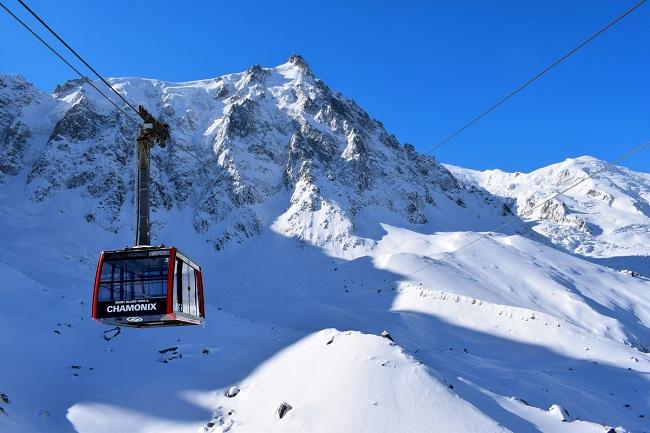
How to reach Mont Blanc
From Geneva or Chamonix, travelers can take the train to Mont Blanc. This scenic journey takes around 4 hours and offers stunning views of the mountains as well as a variety of stations that offer snacks and drinks. Alternatively, those looking to save time can take the bus which departs from both cities every 30 minutes. The journey takes around 1 hour and offers a more affordable option for tourists.
